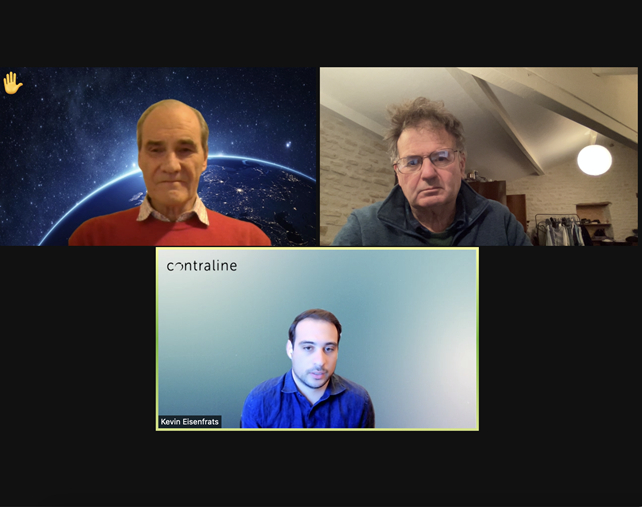News Letter December 2021
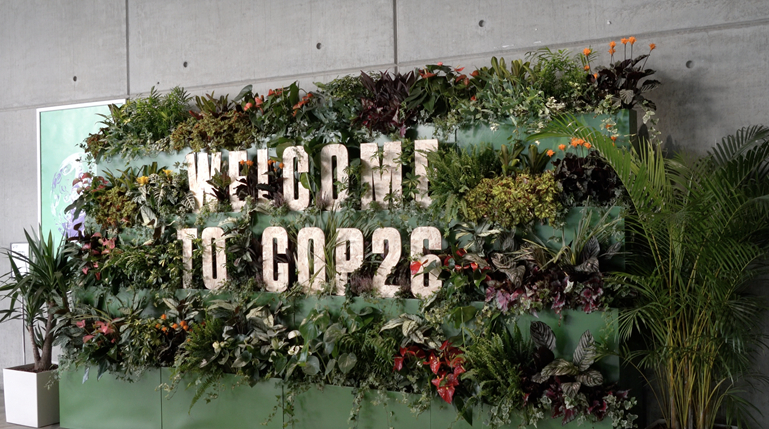
COP26 In Brief
Government Ministers at the 26th United Nations Climate Change Conference (COP 26) did finally reach a deal to reduce greenhouse-gas emissions.
According to the science magazine “Nature”, (which I find a reliable source of information), under the existing emissions-reduction pledges, emissions will be nearly 14% higher by 2030 than 2010.
This is a long way from the document signed by 200 countries “The Glasgow Climate Pact” which states that the carbon dioxide emission must fall by 45% from 2010 levels by 2030 for global warming to be maintained at 1.5°C.
Nevertheless there are Reasons for Optimism
I visited many lectures when at COP and was pleasantly surprised to learn that the UK is well on a course to been able to supply its needs for electricity from renewable energy sources.
I expect that Britain will have to invest in a few nuclear power stations in order to keep the base load stable but, on the whole, the mood was one of optimism. What is even more surprising is that the electricity network suppliers were even confident that Britain will be able to supply the expected demand from the forthcoming switch to electric vehicles as they come steadily on stream. This is amazing news. Britain is obviously blessed to have so many sources of renewable energy.
What is even better news is that modern steel manufacturers can now manufacture steel from hydrogen sourced heat as opposed to dirty coal. This will make a lot of difference to global carbon emissions. Hopefully this will progress to concrete production, which currently contributes to 8% of global greenhouse-gases.
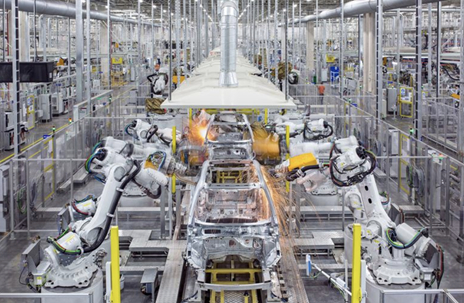
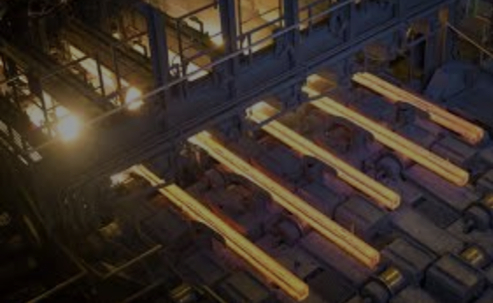
Countries acknowledged the need to reduce emissions faster, and also agreed to report on progress annually. For the first time in a COP text, nations agreed to begin reducing coal-fired power (without carbon capture) and to start to eliminated subsidies on other fossil fuels.
Population Crisis News
Dear All
It has been an action packed year but I am proud to say that the taster film which has been so long in the making, has finally be made. It was ready for COP26 although, unfortunately we were unable to give it a viewing.
This film is about 30 minutes long and, although I did not want to be the presenter in it, it turned out well. I had been trying, instead of myself, to secure a presenter like a “forward thinking politician” or a good BBC type ( my preference would have been for somebody like Professor Alice Roberts).
The script was horribly complex as I grappled to bring the separate story strands together but at the same time represent a balanced point of view.
The idea is that this taster film will now be used to see if we can raise money for a series of documentary films entitled the “The World's Last Taboo Overpopulation”. I am now looking for backers in order to finance our film series.
The Inter-Relationship between Overpopulation and Climate Change
The Filming of our taster film
India was under lock-down for most of this year so I was only able to gain entry by applying for a business visa.
The country had suffered terribly from COVID-19 and there was hardly a person I met whilst in India who was not affected in one way or another by the death of a relative or friend.
Over the 5 weeks that I was there, many hours were spent filming but the majority was spent in the editing suite. A detailed story still had to be written which is why it took so long. I have never written a script before and if anyone says that it is easy, I think that they are talking through their proverbial.
The research undertaken and the cutting of whole swathes of previously written scripts had to be undertaken until we managed to finalise a script which I could fit into 30 minutes.
Devesh Panwar, our Jaipur film director, had done a very good job by assembling a competent team together. He looked after the filming part and then we had 3 editors who concentrated on the slicing, cutting and creation of artwork and horribly complicated visual graphics. I think that the graphics were great and we owe an enormous amount to the work and dedication and attention to the team of editors who brought the whole film together.
Although we had a lot of footage of people interviewed in India, previous experience had shown that we were unable to use this footage because their English is not always that easy for an English speaking person to understand plus the fact that the footage taken did not fit into the script. It would have taken much more time to have fitted them all in so the only way was to concentrate what had to be said in as fewer sentences as possible. So, unfortunately their inclusion in a film will have to await until we do the film in Hindi with an Indian bias.
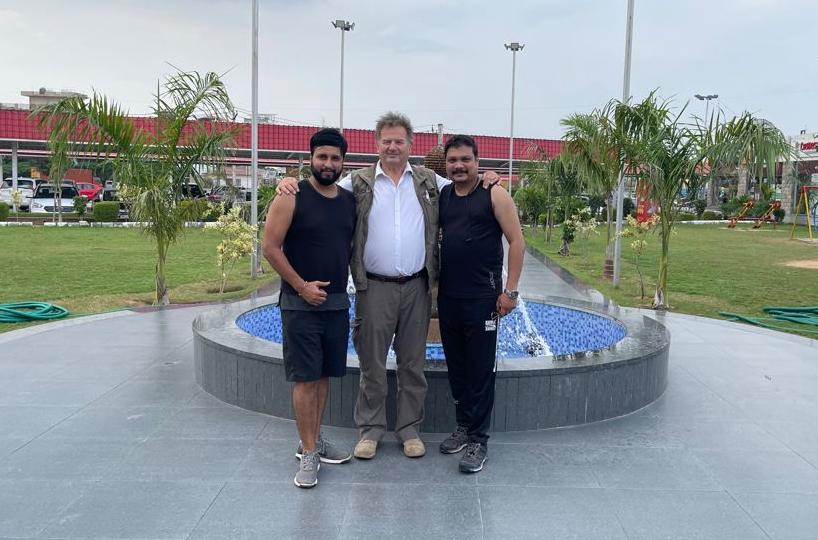
- Amit Tiwari
- David R T Richardson
- Devesh Panwar
Our Part in COP26
COP26 is a like an enormous conference made-up of like minded, enthusiastic people coming together. The actual site in Glasgow, where the conference takes place is separated into two zones.
“The Green Zone” and the “Blue Zone”. The Blue zone is where all the climate change negotiations take place 'whilst the "Green Zone" is for the "Joe Public",holds all the interestig stalls manned by NGO's and also holds a lot of side events such as lectures every aspect of climate change. The Green Zone is open to all. I had applied for and was prepared to pay for a small stall in the Green Zone but, because the film was so late, I had nothing to show the administration which were dishing out the stores so I was unable to secure a place. Apparently there were thousands of others who suffered the same fate.
Disappointment
On arrival in Glasgow, I did try to persuade, even at this late stage, the COP 26 organisers that my film was relevant but my requests to set up a stall so that I could distribute my leaflets and organise a film session fell on deaf ears. The answer to my repeated requests was always NO!. .I was incredibly disappointed. All that effort gone to waste.
I failed to believe that they couldn’t help. There were some of the stands that had little of nothing to do with climate change. There was even a stand displaying a robot strawberry picking machine (see picture below). What this had to do with climate change I do not know! That part of COP26 was very badly organised.
One couldn’t help feeling that the COP26 Green Zone stands had been handed over to push British Exports. I noticed that a group of French NGO’s managed to muscle in on the stands but they were many of them. I was only one person. So it obviously pays to be a large group and have a well established NGO.
The Positive Side of COP26
There are always lots and lots of very interesting side shows and lectures at these COPS and Glasgow did not disappoint. There are not enough hours in the day to see and listen to them all. They are now largely posted on Youtube so you can still see many of these events. Just go to the list of events. Visit
Then if you want to see and event you take the title of the event which you want to see and insert this into the YouTube search engine along with the words COP26 and usually you have something.
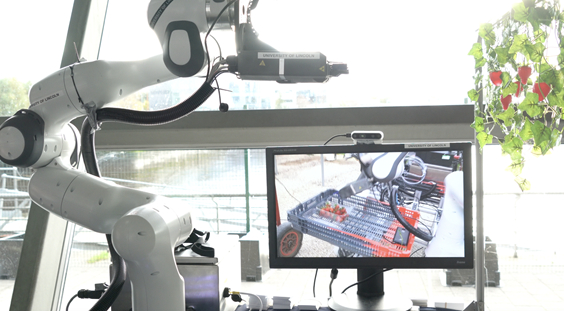

"Mobile devices with solar panels which are positioned in the tree canopies are very well camouflaged"
My Favourite Event was:
The title of the event was “Data and technology are key to save the environment”
Here a research scientist ( AN NGO: RAINFOREST CONNECTION) had developed a listening device using ordinary mobile phones and powered through solar panels which they could be hidden in the top of tree canopies.
These devices then transmit the often deafening and huge variety of sounds back to a computer data base. The data base computer could then analyses the sounds (an hour of sound takes a person an hour to listen to but for a computer a fraction of a second!) All varieties of animal species could then be identified and located through their signature sounds. But, more importantly, these devices could detect chain saw noises from miles around. Hence, therefore this has become an incredibly efficient way of tracking down illegal loggers. The rangers no longer have to make long patrols in to the jungle. They now can count on email alerts sent to them by the computer database, which is continuously monitoring the noise coming in from these devices, check the GPS location sent to them by the device and then go out to specific spots and arrest the illegal loggers. This saves on an enormous amount of land and foot patrols. Go to rfcx.org and you can also watch the whole event on the link below.
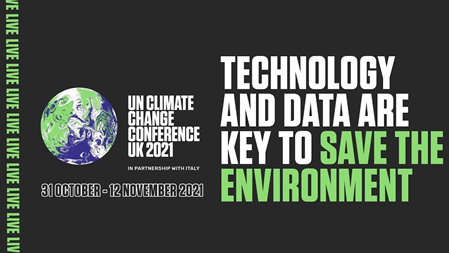
My favourite Stand was:
The pH of the sea remained at a constant level of approximately 8.1 for 600 million years. However, with climate change there has been an increase in CO2 concentration in the sea which is stored in the form of H2CO3 ( an acid) and this is steadily leading to increased sea acidification.
Scientists now believe that the pH of the sea could reach as low as pH 7.7 by the end of this century if we do not stop pumping CO2 into the atmosphere. The lowering of sea pH not only makes it harder for marine shelled organisms to grow and make their shells but it also effects the skeletons of corals so they grow slower. For large sea organisms like fish, the lowering of pH appears to make them seem tired and they also have a problem in communicating.
A Danish scientist by the name of Dr Christina Roggatz now centred at the University of Hull, in the UK has identified how small pH changes in the sea are leading to changes in physical chemical form of messenger molecules which marine organisms use to detect food or In other basic communications. The alteration of the messenger molecules, in turn, are leading to a change in the behaviour of marine organisms.
Dr Christina Roggatz has an explanation for this phenomenon at a molecular level. She has discovered that, as the pH of the sea decreases, so there is a change in shape of certain messenger molecules at a molecular level. The change in shape of these messenger molecules is such that they no longer match the reception sites on the surface of the marine organism. Hence the messenger molecules no longer are effective and hence leading to behavioural changes.
For instance, take the example of an inshore European crab, Carncinus Maenas It carries its egg underneath its abdomen flap on the underside of its body. The female crab, when fecund, may carry upwards of 180 thousand eggs in one clutch. The crab needs to continuously aerate and cleans her brood of eggs for them to survive.
Dr Roggatz explains that for this aeration process to occur the eggs continuously release a chemical messenger during their development which stimulates the female crab to carry out the aeration process.
This is where Dr Roggatz believes that the lowering of the sea pH has resulted in the messenger changing its form at molecular level, and hence the messenger stimulant molecules no longer been recognised on the neural reception sites on the adult crab. Hence the messenger no longer act as a stimulant for the crab to start the aeration process. This will inevitably lead to the death of the eggs and a loss of future broods. Hence it is now possible to understand how the lowing pH could lead to the decrease in numbers of inshore crabs. If this is true, here is a direct link of the effect of climate change on the proliferation of certain species of marine organisms.
Dr Christina Roggatz has published many papers so this will be a line of research which Population Crisis might follow up as proof of the the damaging effects of anthropogenic climate change.
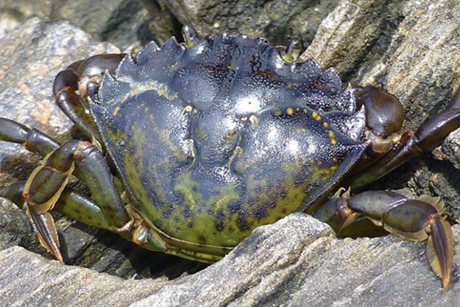
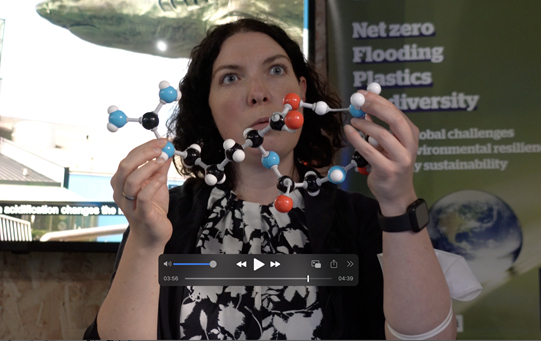
Conclusion
There were many stands at the Glasgow COP26 displaying novel ideas on the causal effects of climate change and even more as to how we are going to use technology in order to adapt to these changes and, more importantly, how we can reduce the effects on climate change into the future.
I would urge everybody reading this document to do pursue their own research interests and visit the next COP in person. We all need to pay an interest in what is happening to our planet and this is the best place to encounter scientist and climate change negotiators.
I only hope that, next time, Population Crisis will be organised enough to secure accreditation in the Green and Blue Zone where it can participate more fully in the feverish action of such important events.
Where does Population Crisis go from here?
The Indian part of Population Crisis would like to start an NGO. This is an understandable progression but this will require an enormous step up in organisational complexity and competence.
Also unless our mission is clearly defined we will be duplicating what other organisations are already doing and, as a result, compete unnecessarily.
Future Filming
I know that there is a film to be made on Climate Change and Overpopulation in India and will be looking to finance this as a high priority.
There is also a film to be made on Overpopulation in the UK (although a budget for this has yet to be discussed.)
I hope to go to a few events this year (Cannes possibly) in order to see if I can raise finance for the film series.
Wishing All you Supporters a Happy Christmas and Prosperous New Year.
David Richardson
Director
GUTS UK and GUTS India.
Other News
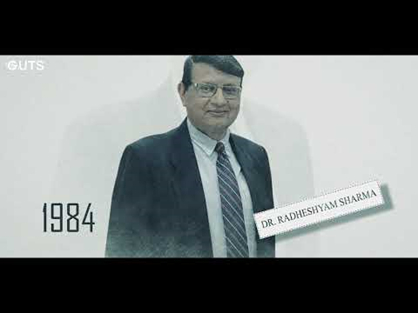
If you haven’t all seen the video that is posted on Population Crisis website RISUG then take a look at it now. On World Vasectomy Day (www.wvd.org.) is a day set aside for organisations which campaigned to help raise awareness on vasectomies. Population Crisis supports World Vasectomy Day.
https://www.flipcause.com/secure/cause_pdetails/MTMzNzUzOn this year’s “World Vasectomy Day” a research Biochemical engineer by the name of Kevin Eisenfrats , who is currently researching a contraceptive called Contraline, took to the stage in a Zoom conference widely available to its participants.
He seems to have taken over where RISUG has left off. However, instead of using the chemical ‘maleic” anhydride as used in the RISUG injections, he has come up with a totally neutral substance which he labels as a Hydrogel (ADAM) which he can inject into the vas deferens in the same way as RISUG.
In fact, if it turns out that Kevin achieves his aim, then his technique will be a "game changer".
He stipulates that the injection of hydrogel will stop and immobilise all sperm in their path and that, furthermore, the hydrogel contraceptive effect degrades at a constant predictive speed over time. In fact, the rate of degradation, he believes, is so uniform that he can predict within certain small variability time window( a couple of months either way) how long a dose of Contraline injection contraceptive will remain effective once it has been injected into the vas deferens. His injections are so precise that he believes he can make the drug effective for 1 year or two years or more.
Take a look at the video if you are interested. It makes for amazing viewing. The world has been waiting a long time for this contraceptive and if all goes well, it could be on the market by 2025 mid year. So watch the space and if you have the spare $50,000, invest. It could be a winner.
Screen print of Zoom Conference Window showing the Emeritus Professor of Reproductive Biology, John Guillebaud in the (top left,) ( who has performed over 4,000 vasectomies in his time), and myself (top right) grilling Kevin Eisenfrats (bottom) on his research work on Contraline


